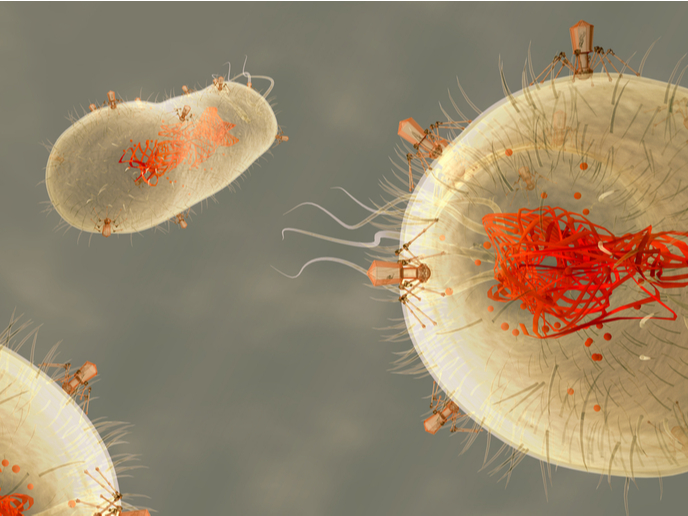Virus diagnostics based on physical properties
Viruses in biological samples are conventionally detected by serological methods or through nucleic acid amplification by the polymerase chain reaction(opens in new window) technique. However, the high mutation rate of RNA viruses requires constant redesign of these diagnostic tools for accurate detection.
A sensor for measuring the physical parameters of microorganisms
The EU-funded VIRUSCAN(opens in new window) project developed a method that can detect the intrinsic physical properties of viruses such as mass and stiffness. “The physical properties of viruses are highly conserved during evolution as they regulate their infectivity,” explains project coordinator Javier Tamayo. Viruses protect their nucleic acid genome in a shell of proteins (non-enveloped viruses) or in a lipid envelope and release it upon interaction with the host. Host mechanical cues or intrinsic viral mechanisms may change the physical properties of viral particles such as stiffness to assist virus entry. Advances in nanomechanical systems(opens in new window) demonstrate the potential to measure stiffness and mass as separate parameters at the nanoscale. Such advances allowed the VIRUSCAN team to design and fabricate optomechanical devices for measuring the physical properties of viruses. The generated sensor demonstrated the capacity to identify individual viral particles and bacteria and measure their physical parameters necessitating only adjustment of the concentration as sample pretreatment.
Bacterial and viral databases to aid diagnosis
Researchers chose to study virus-like particles that resemble the biophysical characteristics of SARS-CoV-2, noroviruses, human papillomavirus and Ebola virus. Alongside screening of various microorganisms in human samples, this led to the generation of two complete virus(opens in new window) and bacteria(opens in new window) databases of biophysical properties. Collectively, the information not only allowed the team to record the mass and stiffness of various viruses but also to associate virion stiffness and infectivity. Using the databases as a reference point is expected to help clinicians in the future to accurately diagnose infections.
VIRUSCAN potential applications and future prospects
Implementation of the VIRUSCAN device is expected to benefit patients by offering the opportunity for fast and accurate diagnosis at reduced cost. The device will help avoid prescription of ineffective antibiotics and facilitate personalised treatments towards prompt resolution of infection. Moreover, VIRUSCAN can assist prompt responses to emergency situations such as Ebola and Zika virus outbreaks, minimising virus spread. Additional applications include the rapid screening of blood donations before transfusion and the tracking of antibiotic resistance, which is becoming a major health threat. “We aim at advancing this technology further to be able to detect airborne pathogens including fungal spores and viruses such as SARS CoV-2 directly from recollection of air samples, as part of an alert system to be installed in critical settings, as hospitals, during pandemics,” emphasises Tamayo. The technology is not limited to the identification of pathogens but can be implemented in nanotechnology applications for studying the properties of nanoparticles as well as nanoparticle-based drug delivery systems. Moreover, VIRUSCAN has the potential to positively impact the energy and environment research fields as well as the food industry in monitoring various molecules such as proteins and enzymes.







